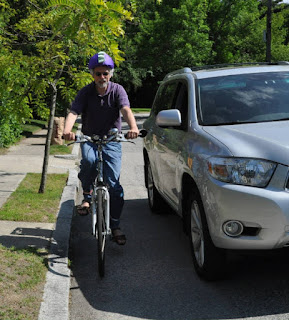In that latter category is a law New Jersey Governor Phil Murphy signed yesterday. It, and others like it, are commonly called “safe passing” laws.
The Garden State version is more detailed than most. It not only stipulates that, when passing, drivers move over one lane if a lane is available. If it’s not, drivers must give a four-foot berth. If that’s not possible, drivers must slow down to 25 MPH.
Moreover, those mandates apply when motorists are passing, not only cyclists, but also pedestrians, scooters and wheelchairs.
Patrick Conklin, President of Jersey City nonprofit advocacy group Bike JC, says that a “great benefit” of the law is that it “not only tells drivers how and when they should pass” but also “when they shouldn’t.” Another result is that it “carves out a space for cycling as transportation,” even on “roads with high car traffic, which are often the most direct routes.”
Conlon is pointing to one of the barriers, for many people, to cycling for transportation: a safe and direct way to pedal to work.
That is not only a problem for urban millennials: In rural areas (Yes, New Jersey has them: I know;
I’ve cycled them!), the direct route is sometimes the only route. Also, many rural and even suburban roads don’t have sidewalks, let alone bike lanes. People are therefore forced to ride their bikes—or walk—or navigate their motorized wheelchairs—on the road.
I think the new New Jersey law is a good step towards promoting human-powered transportation. My hope, naive as it may be, is that drivers’ consciousness keeps pace and doesn’t lead to hostility, as the construction of bike lanes has here in New York, the Garden State’s neighbor.

No comments:
Post a Comment